13 Types of Food-Grade Plastic and Their Properties
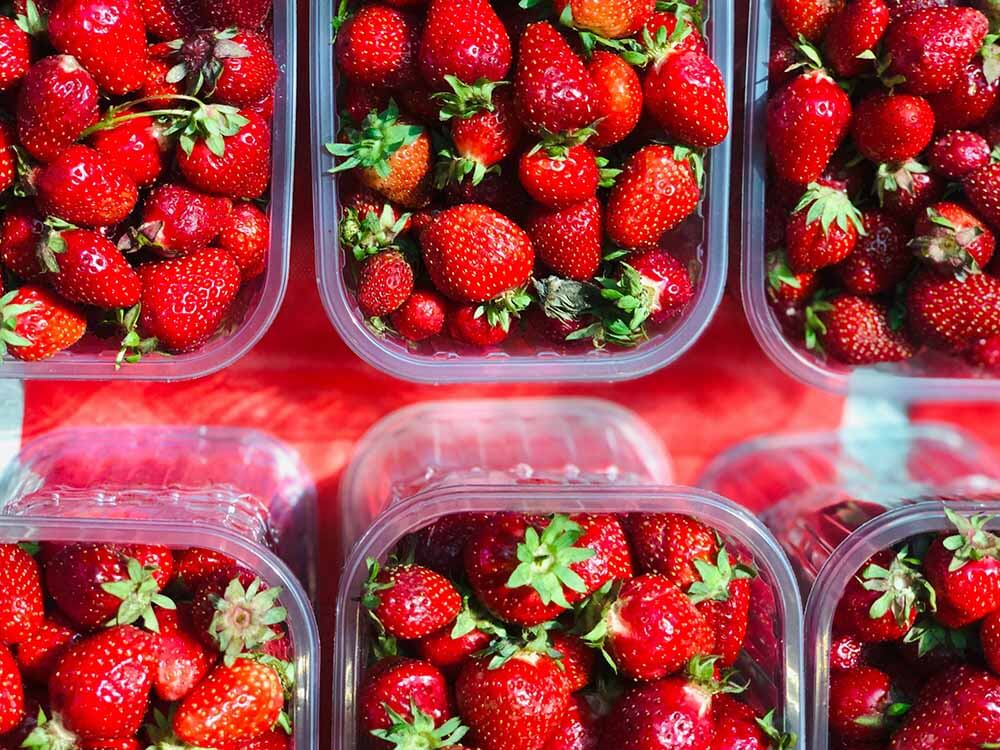
- HDPE (High-Density Polyethylene)
- LDPE (Low-Density Polyethylene)
- PET or PETE (Polyethylene Terephthalate)
- PP (Polypropylene)
- PVC (Polyvinyl Chloride)
- PS (Polystyrene)
- Polycarbonate
- PEN (Polyethylene Naphthalate)
- PLA (Polylactic Acid)
- ABS (Acrylonitrile Butadiene Styrene)
- POM (Polyoxymethylene)
- Nylon (Polyamide)
- PTFE (Polytetrafluoroethylene)
Plastic food packaging materials are ubiquitous in our daily lives, often appearing very similar—transparent and durable. However, they are actually quite different. Can you easily tell them apart? Let’s take a look at the characteristics of these food-grade plastic packaging materials.
HDPE (High-Density Polyethylene)
HDPE, or High-Density Polyethylene, is a versatile plastic polymer that is non-toxic, and odorless, has a crystallinity of 80% to 90%, a softening point of 125 to 135°C, and a service temperature of up to 100°C. Commonly used in various applications, including food packaging. Known for its strength-to-density ratio, HDPE is a preferred material in the packaging industry due to its excellent properties.
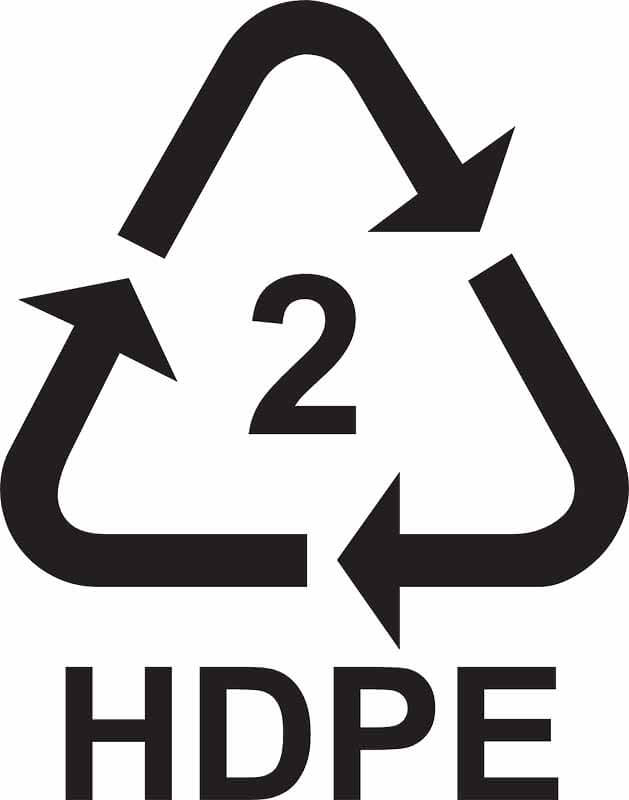
Safety and Food Contact of HDPE
- Safety: HDPE is a safe plastic material for food contact. Using this material to make food packaging material, you don’t need to worry about the chemicals getting into your food.
- Food Contact Approval: HDPE is a food-grade plastic packaging material certified by the FDA and various food and safety agencies.
Physical Properties
- Density: HDPE has a high density ranging from 0.93 to 0.97 g/cm³.
- Appearance: It looks translucent or opaque, depending on the manufacturing process used during production and the thickness of the product.
- Flexibility: HDPE is less flexible than LDPE, but this material has a greater hardness and rigidity.
Chemical Properties
- Chemical Resistance: HDPE is resistant to a wide range of chemicals, including acids, alcohols, and bases. This feature makes it ideal for packaging a variety of food products without the risk of chemical reactions.
- Non-Reactive: It does not react with food substances, ensuring the taste and quality of the food.
Weather Resistance
- UV Resistance: HDPE will degrade when exposed to UV light for prolonged periods, but you can use UV stabilizers to enhance its resistance.
- Temperature Resistance: Packing material made by HDPE performs very well at low temperatures, so it is suitable for making frozen food packaging. However, it can become brittle at extremely low temperatures.
Mechanical Properties
- Tensile Strength: HDPE has high tensile strength, so it can withstand the impact and mechanical stress during transportation.
- Durability: It is durable and resistant to cracking and punctures, a reliable material for making food packaging.
Sustainability
- Recyclability: HDPE is one of the most commonly recycled plastics. It can be reprocessed into new containers, pipes, and more.
- Environmental Impact: HDPE is made from non-renewable petroleum resources, recycling this material helps reduce environmental burden.
Economic Factors
- Cost-Effective: The production cost of HDPE is low, so it is a good choice for making food packaging.
- Efficiency: Its durability and lightweight feature also can lower the cost of transportation.
Application
- Bottles and Containers: HDPE is widely used to manufacture milk jugs, juice bottles, and other beverage containers.
- Plastic Bags: It is used for grocery bags, produce bags, and other lightweight packaging.
- Food Storage: HDPE is commonly used for food storage containers and lids.
- Caps and Closures: It is used for making caps and closures for various types of bottles.
- Frozen Food Packaging: Due to its durability and low-temperature resistance, HDPE is ideal for frozen food packaging.
LDPE (Low-Density Polyethylene)
LDPE plastic, also called low-density polyethylene, is a thermoplastic resin polymerized from ethylene. This is also one of the widely used food-grade packing materials in our daily lives.

Safety and Food Contact
- Safety: LDPE is safe for food contact and its chemicals will not leach into the food when you use it to pack the food.
- Food Contact Approval: LDPE is the food-grade packaging material that is approved by the FDA and other regulatory authorities.
Physical Properties
- Density: The density of LDPE is 0.91 to 0.94 g/cm³.
- Appearance: Generally, the appearance of LDPE is translucent.
- Flexibility: LDPE is highly flexible and suitable for producing products that require stretchability.
Chemical Properties
- Chemical Resistance: LDPE is resistant to acids, bases, and alcohols but has limited resistance to hydrocarbons and oils.
- Non-Reactive: LDPE is an inert material, that does not react chemically with any substances.
Weather Resistance
- UV Resistance: Same as HDPE, if the LDPE is exposed to UV light for a long time, it will degrade.
- Temperature Resistance: LDPE performs well both in low temperature and high temperature, ranging from -40℃ to 65℃。
Mechanical Properties
- Tensile Strength: Lower tensile strength, but higher flexibility.
- Durability: Not as strong as HDPE, but still a good material to make food-grade packaging, especially when you prefer flexibility.
Barrier Properties
- Gas Barrier: LDPE has limited gas barrier properties, not very suitable if you need strict oxygen or carbon dioxide control.
- Moisture Barrier: It has good moisture barrier properties, which is an important feature to keep the food fresh.
Sustainability
- Recyclability: LDPE is recyclable, but it is less commonly recycled than HDPE due to application.
- Environmental Impact: LDPE is made from non-renewable petroleum resources. The related technology is also making an effort to improve its recyclability.
Economic Factors
- Cost-Effective: The production cost of LDPE is cheap, and this material is very suitable for flexible packaging applications.
Application
- Plastic Bags: LDPE is widely used for grocery bags, produce bags and other types of flexible packaging.
- Film and Wrap: It is commonly used for cling films, shrink wraps, and other flexible packaging films.
- Bottles and Containers: LDPE is used for squeezable bottles and containers due to its flexibility.
- Liners and Coatings: It is used as a liner in multi-layer packaging and as a coating for paper and foil.
- Food Storage: LDPE is used for food storage bags and other types of flexible food packaging.
PET or PETE (Polyethylene Terephthalate)
Polyethylene terephthalate is a thermoplastic polymer widely used in the manufacture of a variety of consumer products, including beverage bottles, food containers, and clothing fibers. This polymer is known for its strength, transparency, and resistance to moisture.
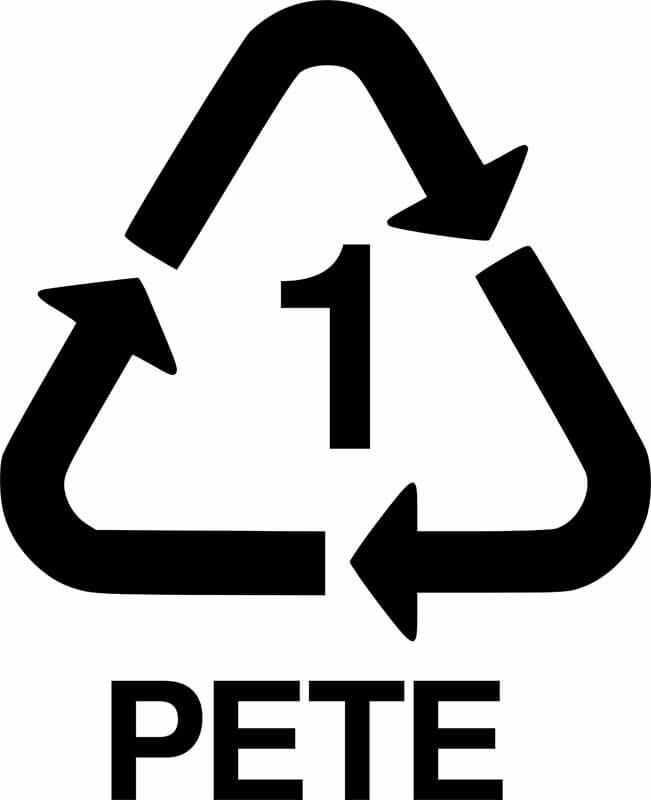
Safety and Food Contact
- Safety: PET is a safe material for food contact that is approved by FDA and EFSA. It does not release any chemicals into the food and beverages.
- Food Contact: Due to its excellent barrier properties against gases and moisture, this material is widely used for making beverage packaging, water bottles, and other kinds of food containers.
Physical Properties
- Density: The density of PET is 1.38 g/cm³, which is lightweight and easy to transport.
- Appearance: PET packaging material is clear with high gloss, so it is a beautiful packing material.
Chemical Properties
- Resistance: PET is resistant to water, alcohol, and oils, but not resistant to strong acids and bases.
- Stability: PET is chemically stable.
Weather Resistance
- UV Resistance: PET has moderate resistance to UV radiation.
- Temperature: The general PET can withstand temperatures around 85℃, so it is only suitable for applications that do not require high heat resistance.
Mechanical Properties
- Strength: PET has high tensile strength and impact resistance.
- Flexibility: This material has a good balance of rigidity and flexibility.
Gas and Moisture Barrier
- Barrier Properties: PET has excellent barrier properties against oxygen and carbon dioxide, making it a good raw material for making food packaging and protecting the freshness of food and beverages.
- Moisture Resistance: The material is also water-resistant, preventing moisture from causing damage to the product within the packaging material.
Sustainability
- Recyclability: PET is one of the most recycled plastics. It can be recycled into a variety of products, including new bottles, textiles, and packaging materials.
- Environmental Impact: Using recycled PET (rPET) reduces the demand for virgin material and reduces the environmental footprint.
Cost-Effectiveness
- Economy: Due to the wide availability and low production cost of PET, this material offers a good balance between cost and performance.
Application
- Beverage Bottles: Most commonly used for bottled water, soft drinks, and other beverages.
- Food Containers: Used to pack various food items, like salads, fruits, and more.
- Textiles: This material can be processed into fibers for textile products.
PP (Polypropylene)
Polypropylene, referred to as PP, is a polymer made of propylene through the addition polymerization reaction. It is a white waxy material with a light appearance. The melting point is 164~170℃, softens at around 155℃, and the use temperature range is -30~140℃. It can resist the corrosion of acids, alkalis, salt liquids, and various organic solvents below 80℃, and can decompose under high temperatures and oxidation.
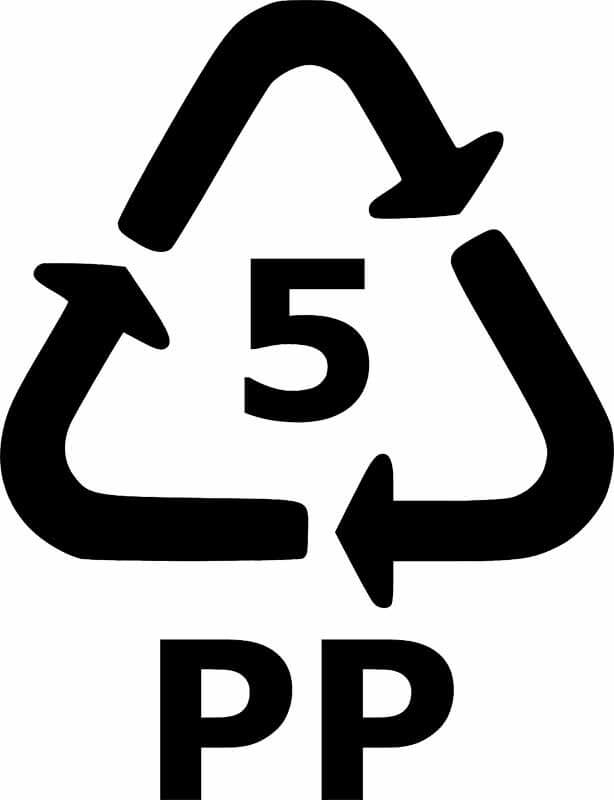
Safety and Food Contact
- Safety: Polypropylene does not contain BPA, phthalates, or other harmful chemicals, so it is a food-safe plastic.
- Food Contact: PP complies with FDA and EU food contact materials regulations, widely used for food packaging and food containers.
Physical Properties
- Density: The density of PP is 0.89~91g/ cm 3, so it is lightweight.
- Transparency: Usually translucent or opaque, but you can modify its features to improve the transparency.
Chemical Properties
- Chemical Resistance: PP is resistant to most acids, alkalis, salts, and organic solvents.
- Water Absorption: The water absorption rate of polypropylene is 0. 01%, therefore, the moisture-proof performance of packaging made with it is very good.
Weather Resistance
- UV Resistance: Unmodified PP has poor UV stability, if you don’t add any UV stabilizers.
- Weather Resistance: If not add any stabilizers, the weather resistance of PP is not good for outdoor use.
Mechanical Properties
- Strength: PP has good impact resistance and fatigue resistance.
- Elasticity and Flexibility: At normal temperatures, PP has good flexibility. But at low temperatures, it becomes brittle.
Gas and Moisture Barrier Properties
- Gas Barrier Properties: The barrier properties against oxygen and other gases are average, not as good as PET.
- Moisture Barrier: Good moisture resistance, but not as good as PE (polyethylene).
Sustainability
- Recyclability: PP is a recyclable plastic, usually marked with the recycling symbol number 5.
- Environmental Impact: Due to it is lightweight, it can reduce energy consumption and carbon emissions during transportation.
Cost-Effectiveness
- Cost: Low production cost, making it a cost-effective material.
- Processability: Processability: Easy to process and shape, suitable for a variety of molding processes such as injection molding, blow molding, and thermoforming.
Application
- Food Packaging: Widely used in making food containers, bottle caps, etc.
- Medical Supplies: Make disposable syringes, vials, and medical devices.
- Textiles: Used to make non-woven fabrics, carpets, and textile fibers.
- Automotive Industry: Used to make auto parts, such as bumpers, instrument panels, etc.
- Daily Necessities: Used to make household items, toys, and daily necessities.
PVC (Polyvinyl Chloride)
Polyvinyl chloride, or PVC for short, is the third most produced synthetic polymer plastic in the world (after polyethylene and polypropylene), with approximately 40 million tons of PVC produced annually. PVC is a polymer formed by polymerizing vinyl chloride monomer (VCM) with initiators such as peroxides and azo compounds or under the action of light and heat according to a free radical polymerization reaction mechanism.
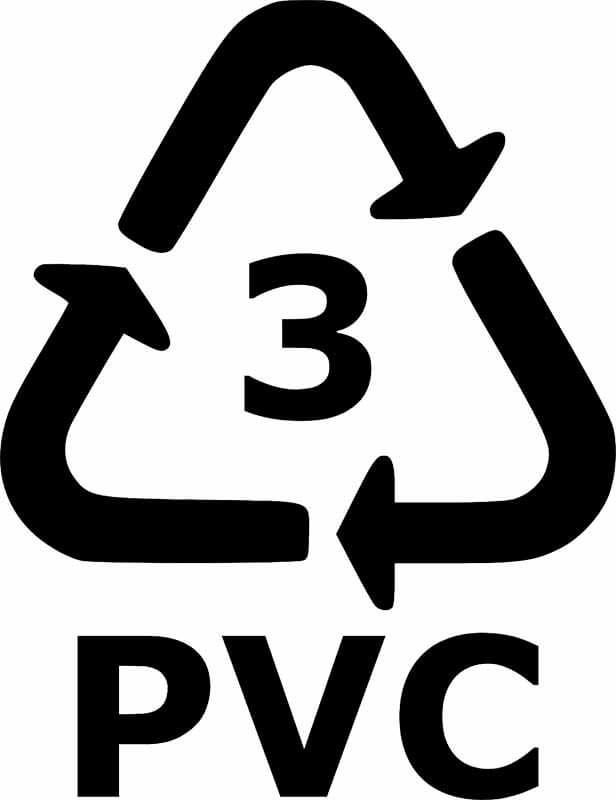
Safety and Food Contact
- Safety: Unplasticized PVC is considered a food-safe plastic. However, a lot of PVC contains many additives, which are harmful to the human body.
- Food Contact: You need to recognize the PVC material with food grade or industrial grade.
Physical Properties
- Density: PVC has a higher density, it is about 1.3-1.45 g/cm³.
- Transparency: Unplasticized PVC can be transparent, but plasticized PVC is usually translucent or opaque.
Chemical Properties
- Chemical Resistance: PVC is resistant to acids, alkalis, and salts, but is intolerant to certain organic solvents (such as ketones, and aromatic hydrocarbons).
- Water Absorption: The water absorption rate of PVC is very low, products made of this material have very good waterproof properties.
Weather Resistance
- UV Resistance: Unmodified PVC has poor UV stability and will degrade when exposed to sunlight for a long time. You can add UV stabilizers to improve its UV resistance.
Mechanical Properties
- Strength: PVC has good tensile strength and impact resistance.
- Hardness and Flexibility: Unplasticized PVC is harder, while plasticized PVC is more flexible and has good plasticity and elasticity.
Gas and Moisture Barrier Properties
- Gas Barrier Properties: PVC has average barrier properties against oxygen and other gases, but has good barrier properties against certain gases (such as chlorine).
- Moisture Barrier: PVC has good moisture-proof properties and can effectively prevent moisture penetration.
Sustainability
- Recyclability: PVC is a recyclable plastic, but its recycling process is complicated because some PVC have plasticizers and other additives.
- Environmental Impact: Since PVC may release harmful gases during the production and incineration process, it has a certain impact on the environment.
Cost-Effectiveness
- Cost: PVC production costs are low, and raw material prices are relatively cheap.
- Processability: PVC is easy to form, and can be processed into various shapes through various molding processes such as extrusion, injection molding, and blow molding.
Application
- Building Materials: PVC is widely used to make building materials such as pipes, window frames, wall panels, and floors.
- Packaging Materials: Used for food packaging films, bottles, and containers, but attention needs to be paid to the use of plasticizers.
- Medical Supplies: Used to make medical supplies such as blood bags, infusion tubes, and medical gloves.
- Electrical and Electronic Products: Used to make cable jackets, plugs, and housings for electronic components.
- Daily Necessities: Such as toys, shoe soles, raincoats, and daily necessities.
PS (Polystyrene)
Polystyrene, abbreviated as PS, refers to a polymer synthesized from styrene monomer through free radical addition polymerization. It is a colorless and transparent thermoplastic with a glass transition temperature higher than 100°C, so it is often used to make various disposable containers that need to withstand the temperature of boiling water, as well as disposable foam lunch boxes.
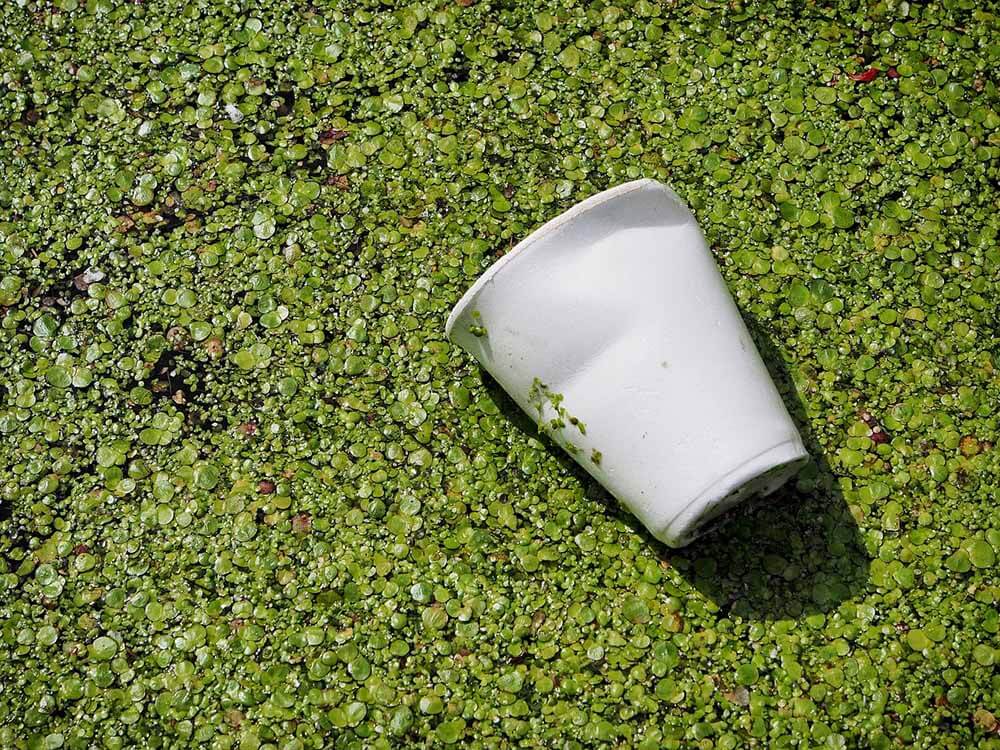
Safety and Food Contact
- Safety: PS itself is non-toxic, but trace amounts of the monomer styrene may remain during production and processing. Styrene is considered a potential carcinogen. Therefore, PS materials used for food packaging must comply with relevant standards for food contact materials to ensure their safety.
- Food Contact: PS is often used to make food packaging materials, such as disposable tableware, beverage cups, and take-out boxes.
Physical Properties
- Density: The density of PS is low, about 1.04-1.06 g/cm³.
- Transparency: PS has good transparency and is usually used for packaging materials that need a transparent appearance.
Chemical Properties
- Chemical Resistance: PS has good resistance to acids, alkalis, and salts, but is intolerant to certain organic solvents (such as benzene, toluene, and ethyl acetate) and is easily dissolved by them.
- Water Absorption: Low water absorption and has good moisture-proof properties.
Weather Resistance
- UV Resistance: PS has poor resistance to ultraviolet rays. It will age, yellow, and become brittle when exposed to sunlight for a long time.
- Weather Resistance: PS is not suitable for long-term outdoor use.
Mechanical Properties
- Strength: PS has good tensile strength and rigidity, but poor impact resistance. Its impact resistance can be improved through copolymerization or mixing modification.
- Hardness and Flexibility: PS is hard and brittle and easy to break, but HIPS has better impact resistance and flexibility.
Gas and Moisture Barrier Properties
- Gas Barrier Properties: PS has average barrier properties against gases such as oxygen and carbon dioxide, and is not suitable as a high-barrier packaging material.
- Moisture Barrier: PS has good moisture resistance, but may become brittle in high-humidity environments.
Sustainability
- Recyclability: PS is recyclable plastic, but attention needs to be paid to classification and cleaning during the recycling process. Foamed PS (such as foam plastic) is more difficult to recycle.
- Environmental Impact: PS has poor degradability and will exist in the natural environment for a long time after being discarded, which has a certain negative impact on the environment.
Cost-Effectiveness
- Cost: PS production cost is low, raw materials are cheap, and processing performance is good, so it is widely used in various fields.
- Processability: PS is easy to process and form, and can be used to manufacture products of various shapes through various molding processes such as injection molding, extrusion, and blow molding.
Application
- Food Packaging: PS is widely used in the manufacture of disposable tableware, beverage cups, food containers take-out boxes, etc.
- Household Appliances: Used to produce casings and parts of household appliances such as televisions, air conditioners, refrigerators, etc.
- Building Materials: Used to produce building materials such as insulation panels, decorative panels, and ceilings.
- Medical Supplies: Used to make test tubes, petri dishes, disposable medical devices, etc.
- Daily Necessities: Daily necessities such as stationery, toys, photo frames, and clothes hangers
Polycarbonate
Polycarbonate, also known as PC plastic; is a polymer containing carbonate groups in the molecular chain. According to the structure of the ester group, it can be divided into aliphatic, aromatic, aliphatic-aromatic, and other types. Among them, the low mechanical properties of aliphatic and aliphatic-aromatic polycarbonates limit their application in engineering plastics.
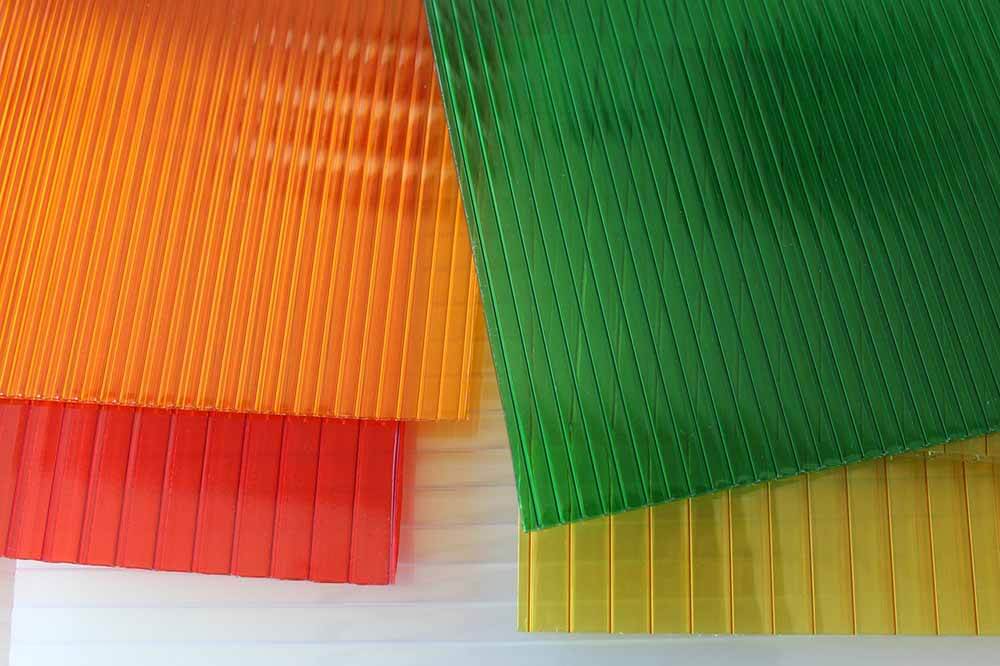
Safety and Food Contact
- Safety: Polycarbonate is a relatively safe plastic and is widely used in food contact materials. However, during the manufacturing process, PC may release bisphenol A (BPA), a chemical that may be harmful to health. Therefore, in recent years, some regions have restricted the use of BPA-containing PC products and developed BPA-free PC materials.
- Food Contact: PC is often used to make transparent and durable food containers, water bottles, and baby bottles. When using PC food containers, avoid prolonged heating to reduce the risk of BPA release.
Physical Properties
- Density: The density of PC is 1.20-1.22 g/cm³.
- Transparency: PC has excellent transparency and high gloss, making it widely used in products requiring high transparency.
- Heat Resistance: PC has excellent heat resistance and can be used for a long time at a temperature of 120°C without deformation or aging.
Chemical Properties
- Chemical Resistance: PC has good resistance to acids, alcohols, and greases, but is intolerant to alkalis and some organic solvents (such as ketones and aromatic hydrocarbons).
- Stability: PC is chemically stable, not easy to degrade, and has good corrosion resistance.
Weather Resistance
- UV Resistance: PC has good UV resistance, but slight yellowing and degradation may occur when exposed to strong light for a long time.
- Weather Resistance: PC material performs well in various climate conditions and is not easily affected by humidity and temperature changes.
Mechanical Properties
- Strength: PC has high impact strength and is one of the best impact-resistant materials among engineering plastics.
- Rigidity and Flexibility: PC material has high rigidity and a certain degree of flexibility, and is not easy to break and deform.
Gas and Moisture Barrier Properties
- Gas Barrier Properties: PC’s barrier properties to oxygen, carbon dioxide, and other gases are relatively average, but it can still meet the requirements of most food packaging.
- Moisture Barrier: PC has good barrier properties against water vapor and can effectively prevent moisture from entering.
Sustainability
- Recyclability: PC is recyclable plastic and discarded PC can be recycled through physical and chemical recycling technologies.
- Environmental Impact: PC has poor degradability and has existed in the environment for a long time, which has a certain negative impact on the environment. With the increasing awareness of environmental protection, the development of degradable and BPA-free PC materials has become an important direction.
Cost-Effectiveness
- Cost: The production cost of PC is higher, and the price is also more expensive than other plastics. However, due to its excellent performance, it is still competitive in high-end applications.
- Processability: PC has good processing properties and can be formed through injection molding, extrusion, blow molding, and other processes, and is suitable for manufacturing products with various complex structures.
Application
- Food Packaging: Used to make high-transparency and high-strength food containers, water bottles baby bottles, etc.
- Electronic Products: Used to make high-demand electronic products such as mobile phone casings, computer parts, and optical discs.
- Automotive Industry: Used to make automotive lampshades, dashboards, and other interior parts.
- Building Materials: Used to make building materials such as bulletproof glass, transparent roofs, and acoustic panels.
- Medical Devices: Used to make medical equipment casings, pharmaceutical packaging laboratory utensils, etc.
- Daily Necessities: such as spectacle lenses, sports equipment, and safety helmets.
PEN (Polyethylene Naphthalate)
Polyethylene naphthalate (PEN) is one of the important members of the polyester family. It is composed of 2,6-dimethyl naphthalate (NDC) or 2,6-naphthalene dicarboxylic acid (NDA) and ethylene dicarboxylate. It is formed by the condensation polymerization of alcohol (EG) and is an emerging excellent polymer. Its chemical structure is similar to PET, but the difference is that in the molecular chain, PEN replaces the benzene ring in PET with a more rigid naphthalene ring. The naphthalene ring structure makes PEN have higher physical and mechanical properties, gas barrier properties, chemical stability, heat resistance, ultraviolet resistance, radiation resistance, and other properties than PET.
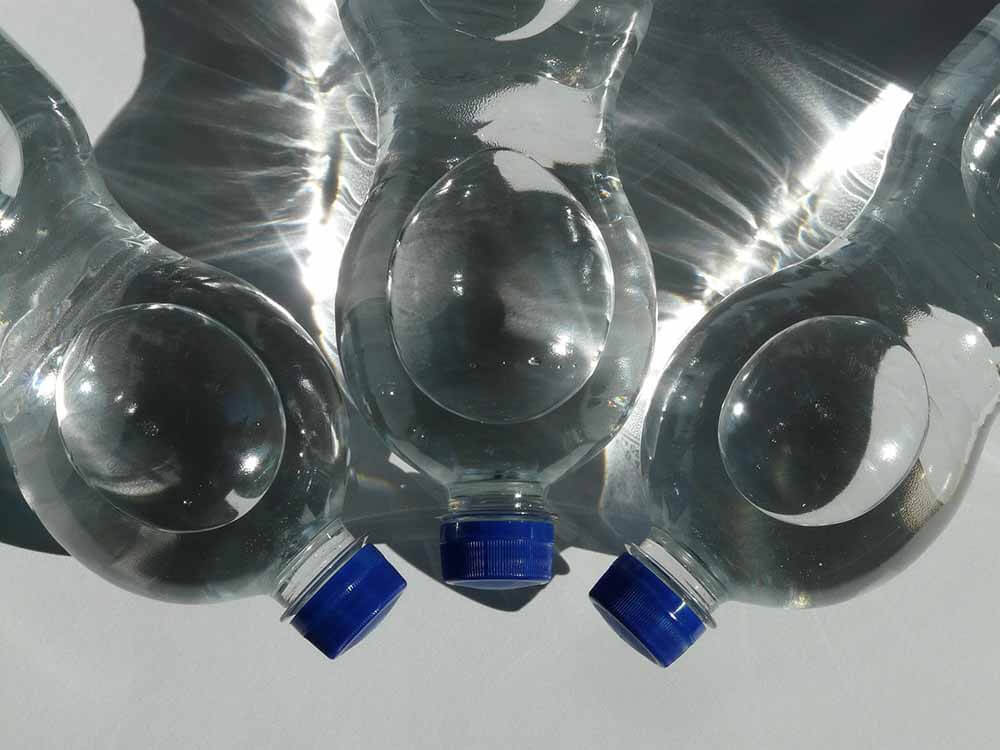
Safety and Food Contact
- Safety: PEN is a high-performance plastic that complies with multiple food contact regulations. Similar to PET, it is considered safe for food contact.
- Food Contact: PEN is a food-grade plastic commonly used to produce food and beverage packaging, particularly in applications that require high-temperature processing, such as hot-filling and high-temperature sterilization.
Physical Properties
- Density: The density of PEN is approximately 1.36 g/cm³, which is slightly higher than PET.
- Transparency: PEN has excellent transparency and gloss and is suitable for packaging materials that require high transparency.
- Heat Resistance: PEN has higher heat resistance, with a higher glass transition temperature (Tg) and melting point than PET, allowing it to withstand higher temperatures without deformation.
Chemical Properties
- Chemical Resistance: PEN has good resistance to acids, bases, and organic solvents and remains stable in harsh chemical environments.
- Stability: PEN has excellent chemical stability, good corrosion resistance, and is not easy to degrade.
Weather Resistance
- UV Resistance: PEN has excellent UV resistance and is more resistant to photoaging than PET.
- Weather Resistance: PEN remains stable in a variety of climate conditions and is not susceptible to changes in humidity and temperature.
Mechanical Properties
- Strength: PEN has high tensile and impact strength, stronger than PET.
- Stiff and Flexible: PEN is both rigid and flexible, providing some flexibility while maintaining strength.
Gas and Moisture Barrier Properties
- Gas Barrier Properties: PEN has better barrier properties against oxygen and carbon dioxide than PET, making it suitable for packaging applications that require high gas barrier properties.
- Moisture Barrier: PEN also has good water vapor barrier properties, which can effectively prevent moisture from entering the interior of the package.
Sustainability
- Recyclability: PEN is a recyclable plastic that can be recycled through physical and chemical recycling techniques.
- Environmental Impact: Due to PEN’s high durability and stability, it is difficult to degrade in the environment, so waste management and recycling are important environmental measures.
Cost-Effectiveness
- Cost: PEN has higher production costs and is more expensive than PET. However, as production technology advances and market demand increases, the cost of PEN is expected to gradually decrease.
- Processability: PEN has good processing properties and can be formed through processes such as injection molding, extrusion and blow molding.
Applications
- Food Packaging: Used to produce high-performance food and beverage packaging materials such as bottles, films, and trays, especially suitable for food packaging that requires high-temperature processing.
- Beverage Packaging: Due to its excellent gas barrier and heat resistance, PEN is often used to produce high-quality beverage bottles, especially carbonated beverage bottles.
- Electronic Products: Used in the manufacture of electronic equipment housings and components to provide high strength and heat-resistant protection.
- Medical Devices: Used in the manufacture of medical equipment and appliances to provide chemical and thermal resistance.
- Industrial Applications: Used in high-performance fibers and films, widely used in industrial fields requiring high strength and durability.
- Automotive Industry: Used to manufacture automotive components such as fuel system components and high-performance tire reinforcements, providing high heat resistance and high strength properties.
PLA (Polylactic Acid)
PLA (polylactic acid) is a new type of degradable material that can be prepared by extracting starch from renewable plants, then producing lactic acid through biological fermentation, and finally chemical synthesis. Products made of PLA can be completely degraded into CO2 and water after use, and are non-toxic and non-irritating. They are widely recognized as new environmentally friendly and degradable materials.
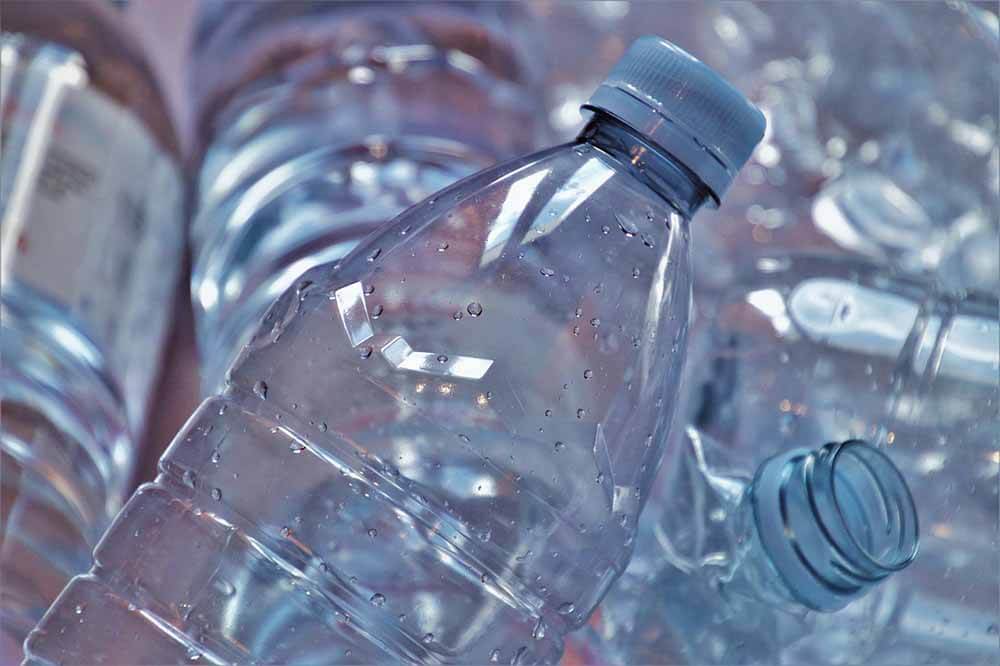
Safety and Food Contact
- Safety: PLA is considered safe and complies with US FDA and EU EFSA food contact material regulations. This means that PLA can be safely used in food packaging without releasing harmful substances.
- Food Contact: Due to its biodegradability and non-toxicity, PLA is often used in food packaging materials such as disposable tableware, cups, and food containers.
Physical Properties
- Transparency: PLA generally has good transparency, making it suitable for use in transparent packaging.
- Rigidity: PLA material is highly rigid and brittle, making it unsuitable for applications requiring high flexibility.
Chemical Properties
- Acid and Alkali Resistance: PLA has poor resistance to strong acids and alkalis, which limits its use in certain chemical environments.
- Solvent Sensitivity: PLA is easily dissolved or damaged by certain organic solvents, which requires careful handling during use.
Weather Resistance
- Degradability: PLA can biodegrade in the natural environment, but its degradation rate is greatly affected by environmental factors (such as temperature, humidity, and microbial activity). PLA can degrade within a few months under industrial composting conditions, but it may take longer in home composting or natural environments.
Mechanical Properties
- Strength and Toughness: PLA has good mechanical strength, but poor toughness and is easy to break. Its toughness can be improved by blending or modifying it with other materials.
- Processability: PLA is easy to process and shape through processes such as injection molding, extrusion, and 3D printing, but the processing temperature is narrow and requires precise control.
Gas and Moisture Barrier Properties
- Gas Barrier: PLA has good barrier properties against oxygen and carbon dioxide, but not as good as some traditional petroleum-based plastics such as PET.
- Moisture Barrier: PLA has a poor water vapor barrier and is not suitable for long-term storage of high-humidity foods.
Sustainability
- Bio-Based Raw Materials: PLA is derived from renewable resources (such as corn, sugar cane, etc.), reducing dependence on petroleum resources.
- Degradability: PLA can be completely biodegraded under suitable conditions, reducing the impact of plastic waste on the environment.
Cost-Effectiveness
- Cost: Compared with traditional petroleum-based plastics, the production cost of PLA is relatively high. However, with the advancement of production technology and large-scale production, costs are expected to be further reduced.
- Market Acceptance: With the improvement of environmental awareness, the market demand for biodegradable plastics such as PLA continues to increase.
Application
- Packaging Materials: PLA is widely used in food packaging, beverage bottles, disposable tableware, and other fields.
- Medical Devices: Due to its biocompatibility and degradability, PLA is used in sutures, surgical implants, etc.
- Textiles: PLA fiber is used to make eco-friendly textiles and clothing.
ABS (Acrylonitrile Butadiene Styrene)
ABS plastic is a terpolymer of three monomers: acrylonitrile (A), butadiene (B), and styrene (S). The relative content of the three monomers can be changed arbitrarily to make various resins.
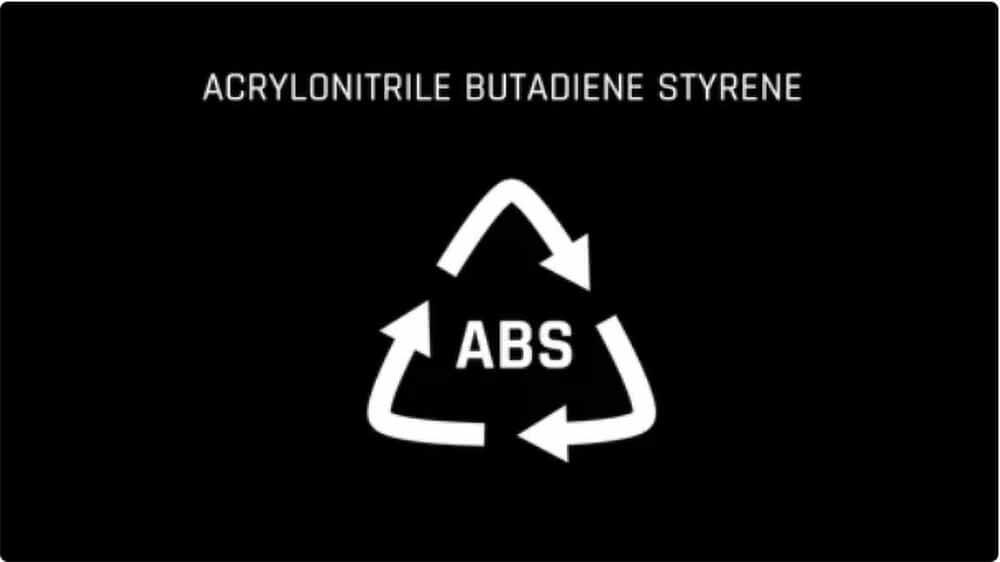
Safety and Food Contact
- Safety: ABS is safe under normal use conditions, but may release harmful gases at high temperatures. Therefore, it is not recommended for food contact in high-temperature environments.
- Food Contact: Although ABS itself is non-toxic, because plasticizers, antioxidants, and other chemicals may be added during the production process, it is generally not recommended for food packaging unless it is specially certified.
Physical Properties
- Color and Gloss: ABS has good color stability and surface gloss, and is easy to color and coat.
- Processability: ABS has good thermoplasticity and is easy to mold through injection molding, extrusion, blow molding, and other processes.
Chemical Properties
- Chemical Resistance: ABS has good resistance to water, salt solutions, and alkaline solutions, but poor resistance to organic solvents, acids, and grease.
- Thermal Stability: ABS is stable at room temperature, but may degrade at high temperatures, releasing toxic gases such as styrene and acrylonitrile.
Weather Resistance
- UV Resistance: ABS is sensitive to ultraviolet rays and will age, discolor, and become brittle when exposed to sunlight for a long time. Its weather resistance can be improved by adding UV stabilizers.
- Temperature Resistance: ABS becomes brittle at low temperatures and softens at high temperatures, so the generally applicable operating temperature range is -20°C to 80°C.
Mechanical Properties
- Strength and Toughness: ABS has good impact strength and toughness, and can still maintain good mechanical properties at low temperatures.
- Hardness and Rigidity: ABS has good hardness and rigidity and is suitable for manufacturing parts that require high mechanical strength and stability.
Gas and Moisture Barrier Properties
- Gas Barrier Properties: ABS has average barrier properties against oxygen and carbon dioxide and is not suitable for applications requiring high gas barrier properties.
- Moisture Barrier: ABS has a certain moisture resistance, but it is not as good as some high-barrier materials, such as PVDC.
Sustainability
- Non-Degradability: ABS is a petroleum-based plastic that is not biodegradable and has a greater impact on the environment.
- Recyclability: ABS can be recycled and reused, but care needs to be taken to avoid contamination and degradation during the recycling process.
Cost-Effectiveness
- Cost: The production cost of ABS is relatively moderate, lower than some engineering plastics such as PC (polycarbonate), but higher than ordinary general-purpose plastics such as PE (polyethylene).
- Market Acceptance: Due to its excellent comprehensive performance, ABS is widely used in the market and has good economics.
Application
- Home Appliance Casings: ABS is often used to make home appliance casings such as televisions, computer monitors, washing machines, etc. because of its beauty and strength.
- Automotive Industry: ABS is used to manufacture interior automotive parts, such as dashboards, steering wheels, door panels, etc., due to its superior impact resistance and processing properties.
- Toys and Models: ABS is often used to make toys such as Lego bricks because it is safe, colorful, and easy to process.
- Pipes and Fittings: ABS is also used to make corrosion-resistant pipes and fittings, which are widely used in the construction industry.
- 3D Printing: ABS is one of the commonly used materials for 3D printing, suitable for making prototypes and functional parts.
POM (Polyoxymethylene)
Polyoxymethylene is a linear polymer with no side chains, high density, and high crystallinity. The surface is smooth and shiny, hard and dense material, light yellow or white, and the thin wall part is translucent.
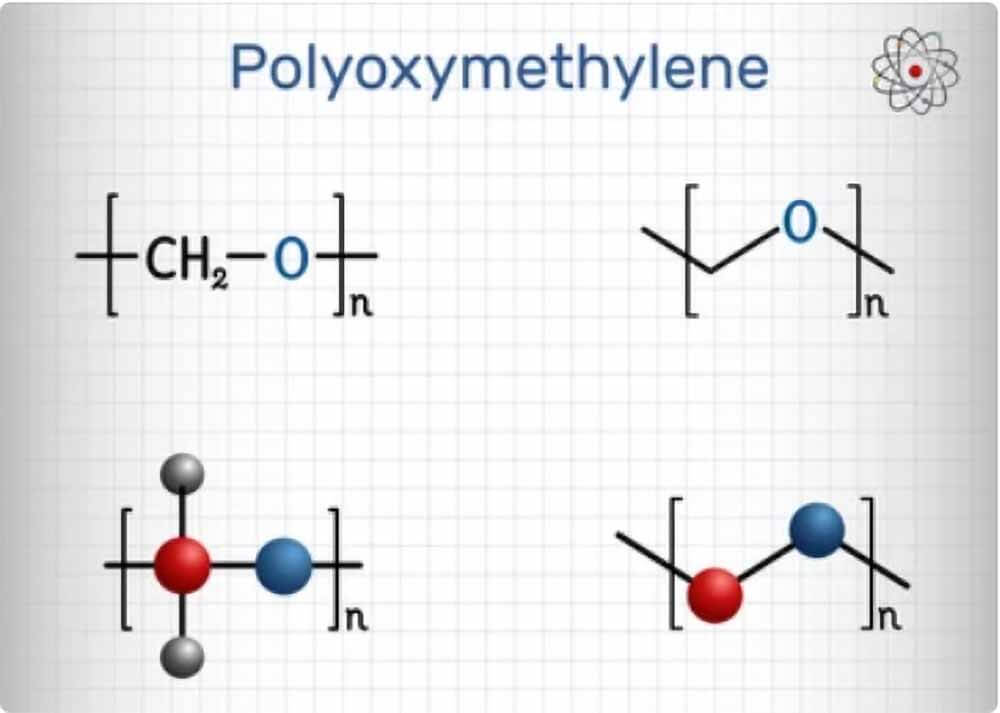
Safety and Food Contact
- Safety: POM has good chemical stability and thermal stability, and is safe under normal use conditions. However, decomposition at high temperatures may release formaldehyde, so use in high-temperature environments needs to be avoided.
- Food Contact: POM complies with US FDA and EU food contact material regulations, so it can be used in food processing equipment and food packaging.
Physical Properties
- Density and Appearance: POM has a high density and smooth surface, comes in white or natural color, and is easy to dye and process.
- Processability: POM has good processability and is suitable for injection molding, extrusion, blow molding, and other molding processes. Its molding shrinkage rate is low and it is suitable for manufacturing high-precision parts.
Chemical Properties
- Chemical Resistance: POM has good resistance to many organic solvents, oils, fuels, alkalis, and weak acids, but is not resistant to strong acids and strong oxidants.
- Thermal Stability: POM is stable at high temperatures, but will gradually degrade and produce formaldehyde gas if it is continuously exposed to high temperatures (over 90°C).
Weather Resistance
- UV Resistance: POM is sensitive to ultraviolet rays. Long-term exposure to sunlight will cause aging, discoloration, and performance degradation. Its weather resistance can be improved by adding UV stabilizers.
- Temperature Resistance: POM maintains good mechanical properties over a wide temperature range, and its applicable operating temperature range is generally -40°C to 90°C.
Mechanical Properties
- Strength and Rigidity: POM has high strength, high rigidity, and good wear resistance, and can withstand large mechanical stress and wear.
- Toughness and Fatigue Strength: POM has good toughness and fatigue strength, maintains stable performance under repeated loads, and is suitable for making mechanical parts that will be used for a long time.
Gas and Moisture Barrier Properties
- Gas Barrier Properties: POM has average barrier properties against gases such as oxygen and carbon dioxide, and is not suitable for applications with high gas barrier requirements.
- Moisture Barrier: POM has good moisture resistance and low water absorption, making it suitable for applications in humid environments.
Sustainability
- Non-Degradability: POM is a petroleum-based plastic that is not biodegradable and has a greater impact on the environment.
- Recyclability: POM can be recycled and reused, but care needs to be taken during the recycling process to avoid contamination and performance degradation.
Cost-Effectiveness
- Cost: The production cost of POM is higher than ordinary general-purpose plastics such as PE and PP, but it is more moderate compared with other engineering plastics such as PA (polyamide) and PC (polycarbonate).
- Market Acceptance: Due to its excellent mechanical properties and chemical resistance, POM is widely used in multiple industries and has good economics.
Application
- Mechanical Parts: POM is often used to manufacture high-precision mechanical parts such as gears, bearings, sliders, springs, etc. due to its high strength and wear resistance.
- Automotive Industry: used to manufacture fuel system parts, interior parts, instrument panel parts, etc. due to its oil resistance and good mechanical properties.
- Electronic Appliances: Used in the manufacture of electrical connectors, switches, micro motor parts, etc. due to its insulation properties and dimensional stability.
- Household Products: Used in the manufacture of kitchen appliances, bathroom accessories, locks, etc. due to its chemical resistance and high strength.
- Medical Devices: Used in the manufacture of surgical tools, medical equipment parts, etc. due to their safety and sterilizability.
- Food Processing Equipment: Due to its wear resistance and low friction properties, POM is widely used to manufacture moving parts and load-bearing parts in food processing equipment.
- Kitchen Utensils: Food-grade POM is also used to manufacture various kitchen utensils such as knife handles, bottle openers, and other tools that require high durability.
- Food Packaging: Although less common than some flexible plastics, POM can also be used in some packaging applications that require high strength and low friction, such as sliding devices and high-precision fittings.
Nylon (Polyamide)
Polyamide is commonly known as nylon, which is the general name for polymers containing amide groups in the repeating units of the macromolecular main chain. Polyamide can be produced by ring-opening polymerization of lactam, or by condensation polymerization of diamine and dibasic acid. Polyamide plastic is developed on the basis of polyamide fiber. It is the earliest thermoplastic that can withstand loads. It is also the variety with the largest output, the most varieties, and the most widely used among the five general engineering plastics.
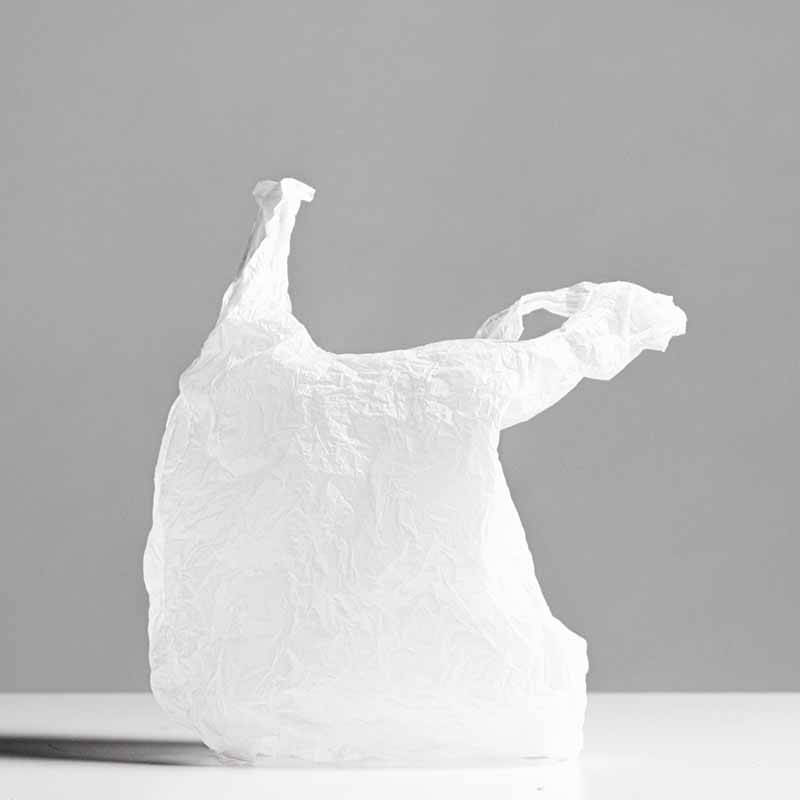
Safety and Food Contact
- Safety: Nylon is a safe material, but may release harmful substances at high temperatures. Therefore, in food contact applications, nylon products need to follow corresponding food contact safety standards, such as FDA, EU, etc.
- Food Contact: Food-grade nylon has passed relevant certifications and can be used to make food contact materials, such as food packaging bags, food containers, tableware, etc.
Physical Properties
- Strength: Nylon has excellent strength, especially tensile strength, making it widely used in a variety of applications.
- Wear Resistance: Nylon has excellent wear resistance and is suitable for high-wear environments, such as bearings, gears, etc.
- Elasticity: Nylon has a certain degree of elasticity and can withstand a certain degree of deformation without breaking.
Chemical Properties
- Chemical Resistance: Nylon has good resistance to many chemicals, but is less resistant to strong acids and alkalis.
- Thermal Stability: Nylon has good thermal stability and can withstand high temperatures within a certain range without losing performance.
Weather Resistance
- UV Resistance: Nylon has average weather resistance, and long-term exposure to sunlight will cause aging and color changes.
- Weather Resistance: Nylon performs well in damp and humid environments.
Mechanical Properties
- Rigidity: Nylon has some rigidity, but not as much as some fiberglass-reinforced nylon or other engineering plastics.
- Toughness: Nylon has high toughness and can deform under a certain degree of impact without breaking.
Gas and Moisture Barrier Properties
- Gas Barrier Properties: Nylon has good barrier properties against oxygen and gases and is suitable for applications requiring air tightness.
- Moisture Barrier Properties: Nylon also has good moisture barrier properties and can be used in waterproof products or in situations where moisture resistance is required.
Sustainability
- Non-Degradability: Nylon is a petroleum-based plastic that is not biodegradable and pollutes the environment.
Cost-Effectiveness
- Cost: The production cost of nylon is relatively low, especially compared with some high-performance engineering plastics. This gives nylon a competitive advantage in many areas.
Applications
- Food Packaging: Nylon materials are used to make food packaging bags, sealed bags, plastic wrap, etc. It has good tear resistance and puncture resistance, and can effectively protect food from external contamination and damage.
- Textiles: Nylon fiber is widely used in manufacturing various textiles such as clothing, socks, ropes, tents, etc. It is popular for its wear resistance and strength.
- Cosmetics and Personal Care Products: Nylon is used to make personal care products such as makeup brushes, brush heads, hair brushes, etc. because of its softness and durability.
- Sporting Goods: Nylon is often used to make sporting goods, such as sports shoes, climbing ropes, backpacks, raincoats, etc. because of its lightweight, wear resistance, and durability.
- Household Products: Nylon is used to make household products such as tents, outdoor furniture, rugs, rugs, etc. due to its durability and ease of cleaning.
- Electrical Equipment: Nylon is used as an insulating material in electrical equipment, such as cable sheaths, sockets, switches, etc., because of its electrical and heat resistance.
- Industrial Parts: Nylon is widely used in manufacturing various industrial parts such as bearings, gears, washers, gaskets, etc. due to its wear resistance and chemical resistance.
- Medical Devices: Nylon is used in the manufacture of medical devices and equipment such as surgical sutures, catheters, stents, etc. due to its biocompatibility and durability.
PTFE (Polytetrafluoroethylene)
Polytetrafluoroethylene, also known as Teflon, is a polymer made by polymerizing tetrafluoroethylene as a monomer. It has excellent heat resistance and cold resistance and can be used for a long time at -180 ~ 260ºC. This material is resistant to acids, alkalis, and various organic solvents, and is almost insoluble in all solvents.
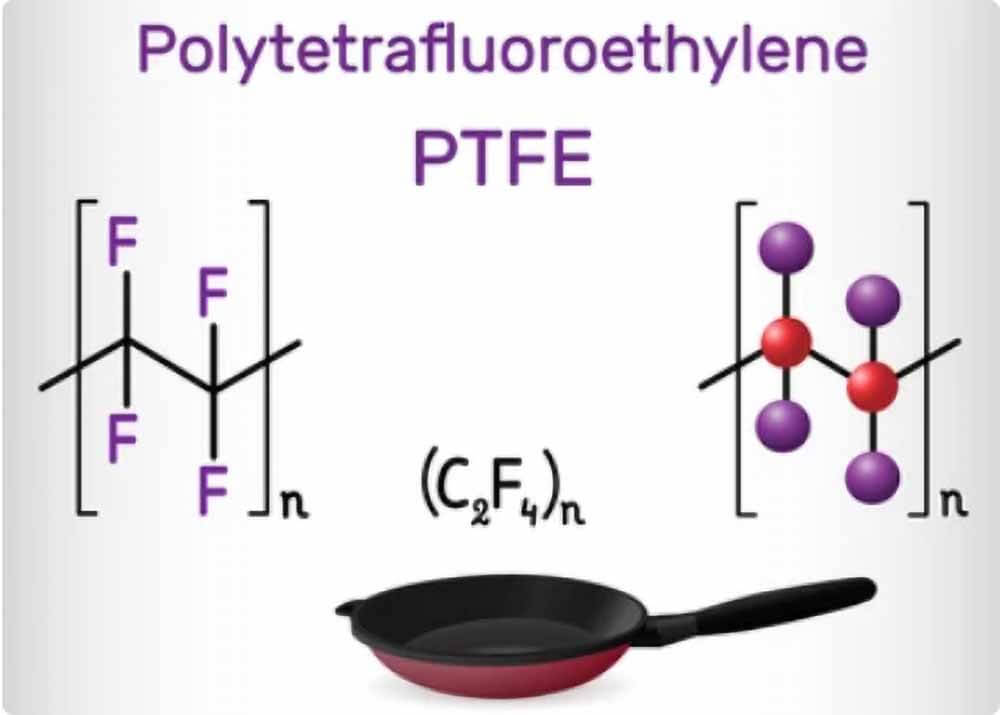
Safety and Food Contact
- Safety: PTFE is safe under general conditions of use and does not release harmful substances. However, PTFE decomposes at high temperatures (over 260°C) and may release harmful gases such as hydrogen fluoride. Therefore, care needs to be taken to avoid high-temperature operations in food contact applications.
- Food Contact: PTFE is often used in food processing, such as baking trays, baking sheets, grills, etc., because of its excellent non-stick properties, making food easy to demold and clean.
Physical Properties
- Non-Stickiness: PTFE has excellent non-stickiness, making it widely used in food processing, and food does not easily stick to its surface.
- Low Friction Coefficient: PTFE has an extremely low friction coefficient, allowing it to reduce energy loss, friction, wear, and noise in mechanical applications.
- High Heat Resistance: PTFE has excellent high-temperature resistance and can withstand high temperatures (up to 260°C) for long periods of time without losing performance.
Chemical Properties
- Chemical Resistance: PTFE has good resistance to most chemicals and is able to resist corrosion and chemical attack.
- Inert: PTFE is extremely chemically inert and hardly reacts with other substances, making it widely used in many chemical applications.
Weather Resistance
- Weather Resistance: PTFE has good weather resistance, can maintain stable performance under different environmental conditions, and is not easily affected by ultraviolet rays, moisture, and pollution.
Mechanical Properties
- Low Friction Coefficient: PTFE has an extremely low friction coefficient, making it widely used in mechanical components such as bearings and seals.
- Flexibility: PTFE has high flexibility and stretchability and can adapt to various stresses and deformations.
- Anti-Wear: PTFE has good wear resistance and can keep the surface smooth for a long time.
Gas and Moisture Barrier Properties
- Gas Barrier Properties: PTFE has good gas barrier properties and is suitable for applications requiring air tightness and sealing.
- Moisture Barrier: PTFE has good moisture barrier properties, is not susceptible to moisture, and can be used for waterproof materials and seals.
Sustainability
- Non-Degradability: PTFE is a non-degradable plastic that is not easily degraded by microorganisms and causes pollution to the environment.
Cost-Effectiveness
- Cost: PTFE is more expensive than other engineering plastics, but due to its unique properties, it is still widely used in fields that require its properties.
Applications
- Food Processing: PTFE is commonly used in food processing equipment, such as non-stick baking sheets, grills, baking mats, etc.
- Chemical Industry: PTFE is used to manufacture seals, pipes, valves, etc. for chemical equipment due to its corrosion resistance and chemical inertness.
- Electrical Engineering: PTFE is widely used in electrical insulation materials, cable sheathing, connectors, and other fields because of its electrical and heat resistance.
- Mechanical Engineering: PTFE is used to manufacture mechanical parts such as bearings, seals, gaskets, etc. due to its low coefficient of friction and wear resistance.
If you are looking for disposable food containers or eco friendly food packaging that is good for your health and environment, we still recommend using molded pulp packaging, not plastic material. Since even the PLA material, is not biodegradable, they have to be under conditions.
You may also interested in:
All you need to know about bagasse packaging
The ultimate guide to choosing disposable food trays
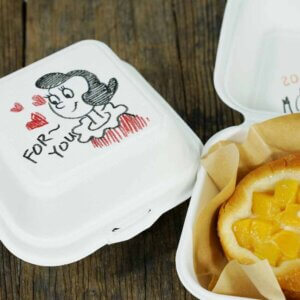
John Q
John Q is Eco March’s Product Manager. With 5 years of prior experience in the food industry after graduating from university, he has been an integral part of Eco March. He excels in creating and developing eco-friendly food packaging products with a keen focus on enhancing the consumer experience.


